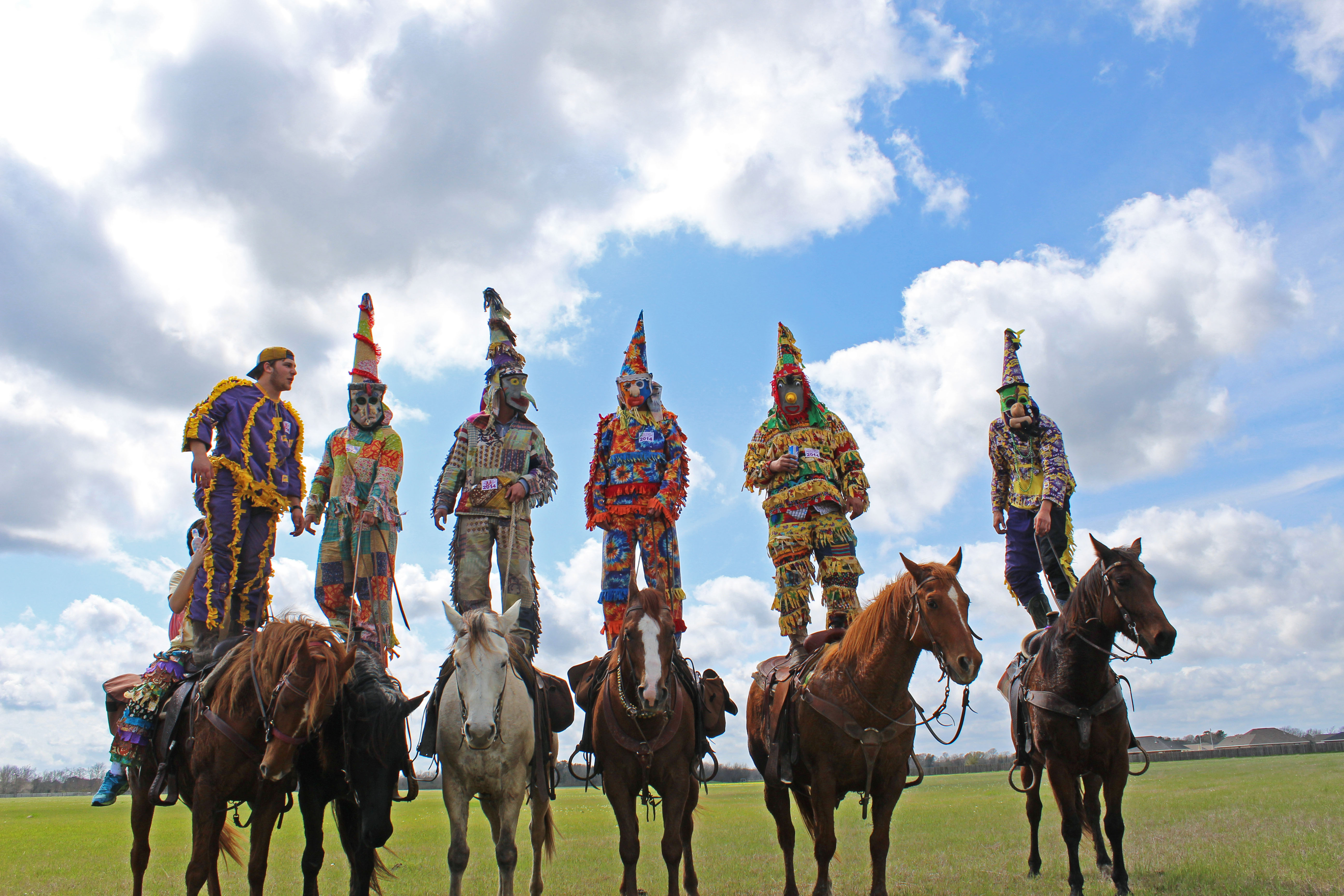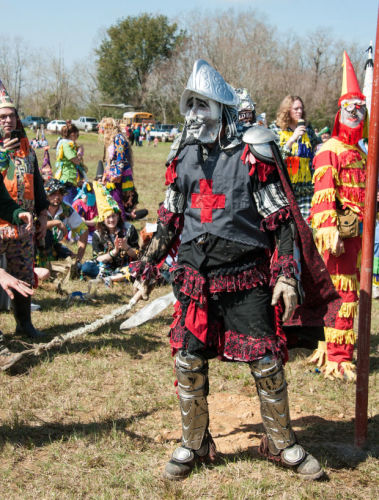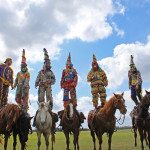It’s time for an old-fashioned Louisiana Mardi Gras! Fiddles and accordions are blasting, and chickens are being tossed so high you’d almost think they were flying. Costumed revelers who look like they came straight out of medieval history sporting fringed and wire mesh feudal outfits on horseback, chasing chickens and begging for ingredients for a huge communal gumbo. Louisiana Cajun Country’s Courir de Mardi Gras - a tradition that dates all the way back to medieval celebrations in France.
Traditions of Louisiana Cajun Mardi Gras
Outside of the stunningly decorated floats and crowned kings and queens you find in New Orleans Carnival festivities, Cajun Mardi Gras is a festival of French origins and a celebration of amazing gumbo - and it all begins on Mardi Gras Day.
On the morning of Fat Tuesday, costumed revelers take the streets wearing handmade medieval jester dresses sporting capuchons hats from French traditions that mocked nobility in the medieval era, and bishop miters for the Catholic papal state. It was all a way to escape the roles of life on a daily basis and live like you don’t have a care in the world. The hustle and bustle of everyday life was drowned away by the sounds of Cajun bands playing and the smell of delectable Cajun country cooking. When the horseback revelers took the streets, Courir de Gras began.
Courir de Mardi Gras
The main event of Cajun Mardi Gras. Costumed revelers on horseback are led by the capitaine of Mardi Gras in the traditional celebration of Courir de Gras, where they’d travel from house to house begging for ingredients for a communal gumbo that would feed the town. But you wouldn’t just receive the ingredients. You need to work for it - and by work we mean an assortment of rituals that included dancing atop their horses, climbing trees, and making chicken noises. Homeowners would then toss live chickens into the air for revelers to chase and swing around their heads. The horsemen are joined by men riding on chicken wagons and trailers to catch the most chickens for the communal gumbo while offering cold beer and sausage, and providing musical entertainment for homes they passed by. Thankfully, you don’t have to wait for the race to be over before the gumbo is prepared. The food is now prepped prior and during the race while awaiting its last ingredient once the race is over - chicken.
Each town in Cajun country has their own unique way of celebrating Courir de Gras. The towns feature various foods and events that really bring out the Cajun experience you’re looking for. For example, in Basile, you’ll find a courir for the kids held a few days before Fat Tuesday.
Parade and Musical Entertainment
Once the run comes to an end, the Mardi Gras parades soon follow. In Cajun country, you won’t find parade floats featuring intricate gowns or elaborate mockups. You will instead find homemade costumes and handmade decorated floats pulled by trucks rather than tractors. The parades are also accompanied by traditional music featuring Cajun bands playing the fiddle, accordion, guitar, and the must-hear washboard.
Cajun Mardi Gras is definitely a sight to see. If you want to experience something different than New Orleans Carnivale, everyone is welcome to come down to Cajun Country. Spend Mardi Gras this year in Cajun country for an experience you’ll never forget. Just read what National Geographic’s Young Explorer Caroline Gerdes had to say from her experience going from New Orleans Carnival to Cajun Mardi Gras.





0 Comments